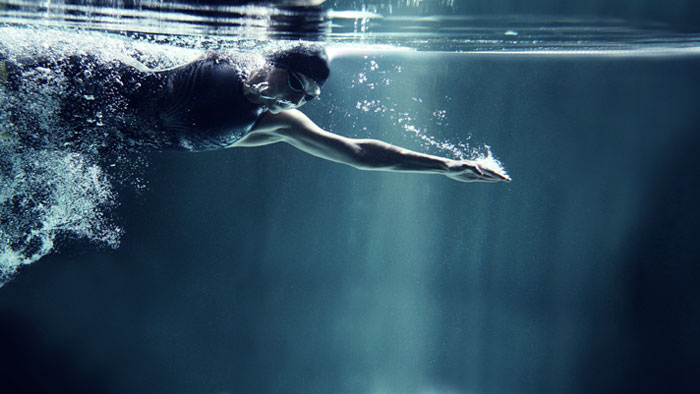I am a lifelong runner who became a triathlete when bursitis sidelined me about 11 years go. I had just run a marathon, and found myself needing to take a break to allow the bursitis to cool down.
I remember saying to my husband John (in the woeful whiny voice that injured athletes tend to use), “what am I supposed to do now?!” John, a lifelong swimmer and previous ocean lifeguard, looked at me and said dryly, “Why don’t you go swim?”
I gasped, as if he had stabbed me. “With MY FACE IN THE WATER?!”
Despite my initial shock, I did make it to the pool that day for my first swim ever. I have since come to love swimming both in the pool and in open water. Beyond the simple motion of swimming itself, I deeply appreciate how beneficial it is for me as an athlete, and as a triathlete specifically.
I’ve been coaching long enough to realize that many triathletes don’t feel similarly about swimming, and this argument may take some persuasion on my part. I notice many triathletes will frequently take time away from swimming during the post-season and pre-season. I want to convince you to keep swimming in your training rotation year-round. If you do, you may just learn to find a place for it in your heart.
Use it or Lose it
Some triathletes may dislike swimming because they don’t think they are any good at it. Why continue to bang our heads against the pool deck once the season is over? I get that. But, when we take time away from swimming, our skills get super rusty—so this makes our perception of our ability even worse.
Even the most experienced swimmers will tell you: Swimming is unforgiving. Your feel for the water and technique can slip away after only a week out of the pool. If you take the whole winter off, you’ll spend much of the first month or two upon return just regaining the feel for the water. It won’t be possible to make gains, since you’ll have to work to just get back to where you were instead of making progress.
Year-round consistency allows you to start your training for next season at the next level. We like to call this phenomenon the NEXT LEVEL SHIZZLE. Since you won’t need a month or so to regain your feel, then another month or so to regain fitness, you can begin the season at a more advanced level. This translates to both faster times and increased efficiency.
What a Workout!
Swimming is an amazing full-body workout, with minimal impact on the joints and muscles that can be stressed by running and cycling. By substituting some of your run or bike hours for the pool, you can maintain your overall cardiovascular fitness while reducing the injury risk that might come with a higher run or bike volume.
We also find that our athletes who swim more regularly tend to have better all-around fitness for triathlon. Many of our runners report they are actually faster as a consequence of adding swimming to their regimen.
Remember, triathlon is one sport with three phases. Quite a few too many triathletes shortchange the importance of the swim and how it will impact the rest of the race. Yes, the swim may be the shortest portion of the day, but it sets the tone for everything to come. If your swim fitness and technique are lacking, you will get out of the water feeling gassed out, rather than gassed up.
Gain Technique and Efficiency
Since you don’t have to focus on a pending race during the post- and pre-season, it is the perfect time to identify ways to find free speed. Swimming is a technique-heavy sport, so time spent working on the finer points of efficiency can pay dividends.
Video analysis especially can be helpful for you to visualize what you are doing, so you have a better understanding of your body orientation in the water. An on-deck swimming lesson is a great opportunity to make adjustments to your technique in realtime. A coach can tell you when you are doing it correctly, so you can remember what “correct” feels like when you work on your own.
Once you know your game plan, workouts can be focused on drills that help you work on your areas of opportunity. To keep things interesting, you can include some shorter, hard sets. We like harder 25 sets as a way to practice form under effort, without adding much fatigue that can cause you to get sloppy in the water. Remember, only focus on one aspect of form at a time to keep yourself from being overwhelmed. Don’t try to fix “all of the things” at once!
I wrote a previous article with a few simple post-season swim workouts for you to try, if you’re not sure where to start.
By taking the time to truly focus on this discipline, you will prepare yourself for an overall stronger triathlon. So, go on and get your face in the water!










